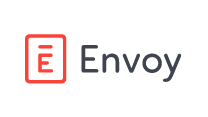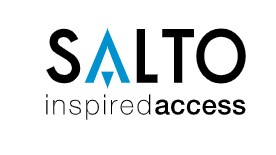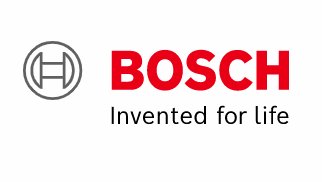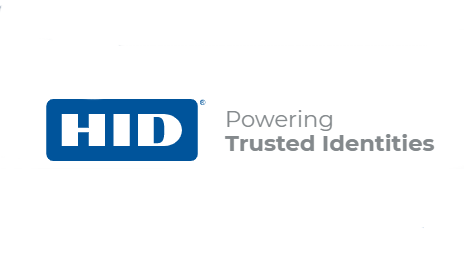The best access control systems allow a business to secure their facility, controlling which users can go where, and when, along with creating a record of the arrivals and departures of folks to each area.
Gone are the days of having a facility not secured, or handing out physical keys to employees. With our uncertain times, security has become more important, and an access control system has become an integral part of any security plan for a facility.
With affordable keycards, a business can have a unique one for each employee, and ensure that the employee only has access to the area relevant to their position. This type of access control also is useful for students at a school, and patrons at a hotel. Furthermore, when the employee no longer works for that employer, nobody needs to collect the access card like with a physical key. Rather, the card can just be deactivated, and there is no requirement to change all the locks, like would have been done with a physical key and lock setup.
Access control systems: What you need to know
What is an access control system?
An access control system is a series of devices to control access among visitors and employees within a facility.
How does an access control system work?
Typically there is centralized control via a software interface. Each employee is provided a level of security so that they are given access to the areas that are needed for them to perform their job functions, and restrict access to other areas that they do not need access to. A common configuration is to have some type of card reader to control each doorway. Each person that has access to the facility then has a card (which often has the dual purpose of an ID badge), which then gets scanned for access to the doorway. This is an attractive setup with obvious advantages compared to a traditional physical lock as visitor cards can be given an expiration date, and employees that no longer need access to the facility can have their cards deactivated.
What devices get deployed?
At the core of an access control system are the card readers, and the access cards that are provided to the users with each doorway protected by one. Beyond that, there is the central control, which can vary from a central computer running the software, or a cloud based system with access from a web browser or mobile phone app. Beyond that, some systems support integration with other devices for other protections, such as security cameras, break in alarms, carbon dioxide detectors, and smoke and fire detectors.
What types of facilities will benefit from an access control system?
Many types of facilities deploy access control systems; really anyplace that would benefit from controlling access to various areas as part of the security plan. The types of facilities include governmental, healthcare, military, business, educational, and hospitality.
Are there other benefits?
In this era of ‘Big Data,’ another benefit of an access control system is that data on the movement of employees in facilities is tracked and stored. This can then be analyzed on an individual basis, and in aggregate. This data becomes particularly valuable when an incident occurs to see who was physically in the area at the time of the incident.
What does an access control system cost?
There are various costs to consider when acquiring an access control system. They can be broken down into the acquisition cost, and recurring costs.
First there is the cost of the hardware, which includes both the acquisition of the devices, and the installation costs as well. Also consider any modifications to the building structure that will be required, such as additional networking locations, or getting electricity to an access card reader.
The other costs are the subscription costs, which are a recurring expense. If purchasing the software outright, there will be upgrades down the road, and which need to be figured into the price. These days, many of the vendors supply the software through the cloud, with advantages of continuous upgrades at the back end, but then there is a requirement of a subscription to use the service, typically paid monthly or annually. Also, consider if a contract is needed, and for what length.
Also, as occurs in many enterprise purchases, the costs of an access control system are quite opaque when you go to the vendor websites. Thankfully, these firms are forthcoming with a custom quote, so be prepared in advance to assess your needs, such as the number of users, the quantity of openings to be protected, and other anticipated extras, such as security cameras or integrated fire protection to streamline getting a quote.
How we review access control systems
We took a look at many different access control systems prior to selecting which to include in this guide. The methods include looking at the available features of each product, including the support services, and available pricing.
A limitation is that we unfortunately cannot install these access control systems and use them firsthand. However, we endeavor to overcome this by scouring the internet, including social media, for user reviews. Also looked at are the Google Play Store, and Apple App Store for available apps, that can also be a treasure trove for user experiences for applicable apps. We especially attempt to identify trends in the reviews. When available, an online demo is downloaded and trialed to assess the software more directly.
In some cases, user support gets contacted on an anonymous basis to assess how responsive they will be to meet user needs.
Get a quote for an access control system
How it works

1. Enter your details below
Simply tell us a bit about your business, what your access control system requirements are, and leave some contact details.

2. We search our database
We'll match your requirements with the services and prices that our partners offer.

3. Partners will contact you
Only the suppliers who match your requirements will reach out to you.
Access control systems comparison
This is how our recommended access control systems compare head-head-head in three crucial categories. You can read a short review of each below.
| Access Control System | System Type | Pro installation | Key features |
|---|---|---|---|
| Honeywell | Cloud-based | Yes | Choice of software, available custom integrations |
| Envoy | Cloud-based | Yes | Mobile app support, upfront pricing |
| Salto | Cloud-based | Yes | Wireless card readers, Virtual network |
| Bosch | Cloud-based | Yes | Scalable, wide range of hardware |
| HID | Local hosting | Yes | Real time monitoring, multiple form factor options |
Access control systems mini reviews
Honeywell Access Control Systems review

Honeywell Access Control Systems are a popular option for enterprise customers, particularly in facilities with critical infrastructure. Support for the products is available via a number of methods, including a toll free phone number, an online portal, and a Knowledge Base Library, although a shortcoming is the limited hours of phone support.
Pricing for a Honeywell Access Control System is not available, and opaque on the website. A custom quote can be had from either Honeywell, or via a third party reseller.
Honeywell endows its access control system with some inherent advantages. This includes scalability, so the system can grow as needed with the organization, with no absolute maximum on the number of supported users, and support for a system at multiple sites. Another highlight is the Win-Pak Integrated Security Software, that is a single, browser based interface, that can tie together access control, along with intrusion prevention and video surveillance that can be accessed and managed from any internet connection. There is also support to integrate in third party solutions, for example, the popular BioConnect Suprema and Morpho Biometrics. Finally, maintenance needs are minimized with this Honeywell system, as it is designed to be an automated process, with the ability to send reports via email.
Envoy review

Envoy chooses to focus its efforts on access control to office environments, for both security, and health. It also is designed to save time for teams.
With the health aspect, Envoy is quite timely given the ongoing COVID-19 pandemic. It has useful features that include asking screening questions of visitors such as if they have been sick in the last 14 days, and touchless sign ins. Guests can also fill out forms relevant to a visit.
Security is also paramount. Envoy can track visitors, have them sign documents digitally such as an NDA, and have them automatically take pictures upon arrival for automated badge printing. Staff members can be notified upon arrival so they can greet the visitor. Visitors can also be cross referenced against third party watch lists to avoid unwanted folks, and notifications can be made- via email, text or Slack, if a visitor does not gain entry. Global information can also be easily gained via an analytics function to spot trends in visits to the facility, and guest logs on an annual basis are just a few clicks away.
Envoy is also refreshing that it offers four tiers of plan. This includes a most basic free tier, on up to a custom plan to cover the most complex of needs.
Salto review

Salto is based around smart locks for the business environment. These smart locks then offer “Cloud-based access control, for any company type or size.”
These Salto locks can then be controlled through the cloud. There is a Salto app that can be used to control the lock, with robust control such as being able to supply the mobile key to anyone with a smartphone, avoiding the need for an access card to be able to open a lock.
For even more ambitious needs, Salto also supports control of the lock via an internally developed app. This Salto control can be piggybacked into an existing app via Connect API.
Once setup, providing access to locks to an individual can be done on a granular level. Not only is the permission granted specific to each lock, but also to a specific timeframe, offering a much higher level of security than any mechanical lock. As Salto is managed via the cloud, it can be controlled remotely, from anywhere with a web browser.
Salto’s solution is quite scalable. Three tiers are offered of plans for management, including a custom tier that can be branded on the front end to your organization with a logo and URL.
Bosch Access Control review

Bosch Access Control offers a scalable, and effective solution for a wide variety of applications- after all this company claims 35 years of experience. It includes a number of software, as well as hardware options to suit different needs.
Just about every access control company claims that it is a scalable solution, but Bosch takes this to the next level. There is a choice of hardware, Access Modular Controllers, readers and credentials, that can then be compatible with various software solutions as the system scales up to keep pace with the company’s needs. The software is even more flexible, such as the Access Professional Edition (APE) that is designed for a starter type of project. Using the same hardware components, you can then switch to the Access Management System (AMS) which is well suited to medium and larger projects. As things continue to scale up, next, you can transition to the BIS Access Engine (BIS-ACE), designed to handle the most complex projects, such as airports or stadiums.
Bosch’s Access Control does an excellent job of not only securing an area for security, and to avoid unwanted intruders. It also helps to plan for an emergency, such as having a plan to unlock the doors in case of an emergency situation.
HID review

HID is a world leader in access control, securing assets with a combination of physical security, and logical access control. HID provides a comprehensive combination of available features, such as access control that can be time based, real time monitoring, scalable solutions, and individualized, concept-to-implementation support.
HID can provide a total solution. This includes support for printing the ID badges via a broad portfolio of advanced ID card printers that are a cornerstone of many access control systems. With these printers, and their consumables, a variety of cards can be chosen, including both low frequency and high frequency contactless cards, as well as chip based smart cards. For situations that demand even a higher level of security, there is the option for holograms to be on the cards providing an additional layer of protection against counterfeiting. There is also the option for physical tokens to allow for multi-factor authentication.
Going in the direction of convenience, another route is HID Mobile Access that forgoes a smart card, and rather, allows a smartphone to be used for secure access. Through an online management portal, administrators can grant and revoke privileges to employees and visitors as needed.
Access control systems: the best features
These features are the ones to look for when considering acquisition of an access control system. A good access control system makes your facility more secure, and controls visitors to your facility.
Installation
Any access control will require professional installation. Thankfully, the suppliers have installation available so the system can all be configured professionally to work the way it was intended. Be sure to inquire about who does the installation, and the pricing when getting a quote.
Security
The most core function on an access control system is the security of the facility. Look for systems offering the latest in technology, with cards and access card readers that can replace physical locks and keys with a higher level of protection. Look for door readers that offer physical security in the form of specialty screws to discourage tampering, and hidden wiring, as well as tamper alarms. Another option is for a door hold alarm to send an alert if a door is open for too long. Some systems offer integration with security cameras as well.
Access Cards
Access cards are another critical component. Look for a vendor that can also supply the printer for the cards, along with the consumables to create them. Some offer a higher level of security in the form of holograms, and an encrypted signal.
Emergency Alarms
Some access control systems only do the security aspect of a facility. Others can also go beyond this to encompass aspects including emergency lockdown, fire, carbon monoxide detection, and intrusion detection. Be sure to determine your needs in advance so the right system can be chosen.
Scalability
Consider the potential scaling of an access control system. Inquire about aspects such as the maximum number of supported employees, and door openings. Some systems can grow, using the same hardware, while others have a limit to what is supported so factor in future needs when choosing a system.
Reporting
Be sure to assess the reporting interface for the access control system. While some are run locally, more modern ones reside in the cloud, enabling access from any browser anywhere, making it usable from outside the facility. A reporting interface can provide detailed information on where employees are within the facility. This interface can also tie into time and attendance reporting.
from TechRadar - All the latest technology news https://ift.tt/3iyR4hQ
via IFTTT
0 التعليقات: